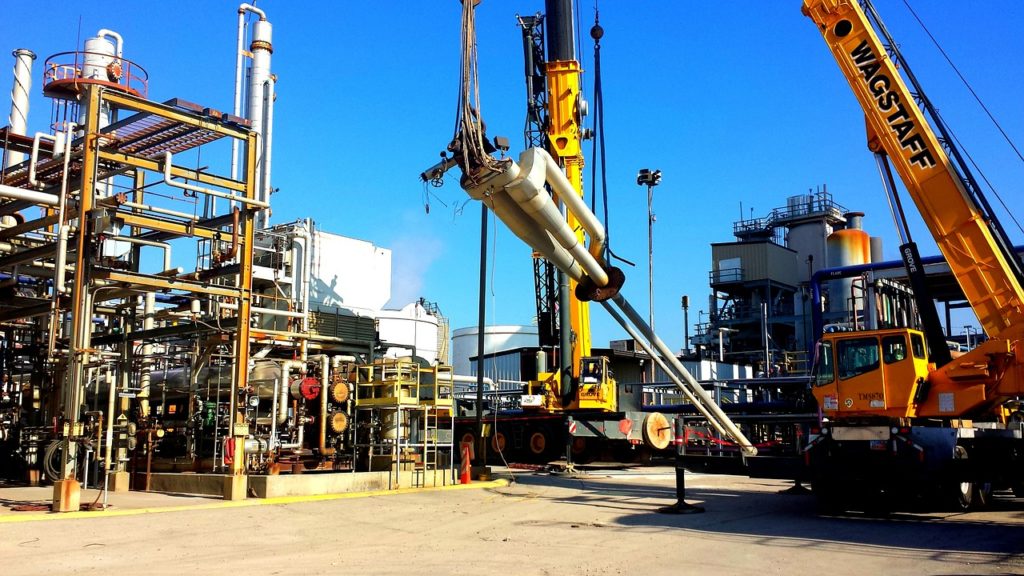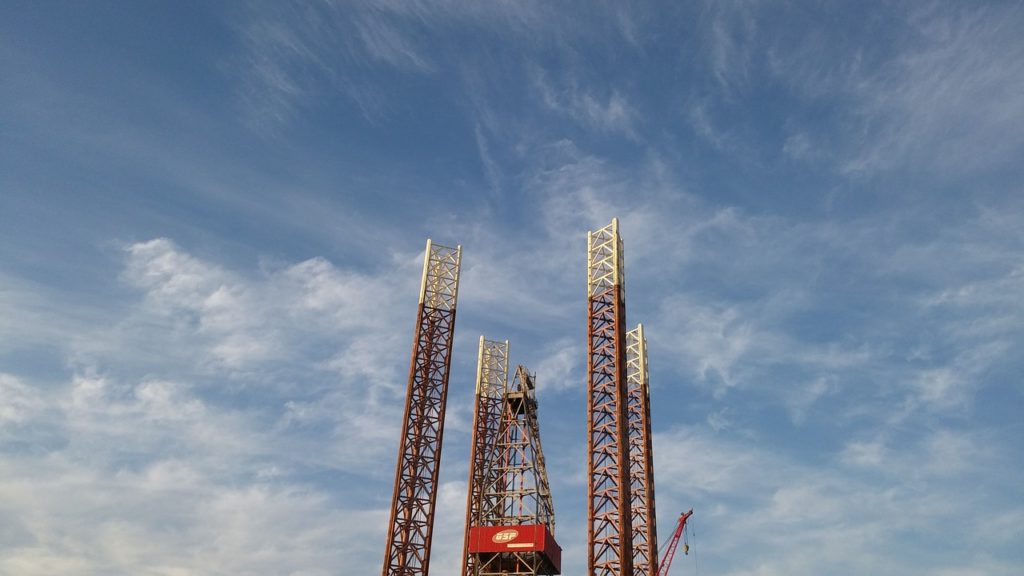Countries in the Middle East accounted for more than a quarter of the world’s oil production in 2014. The world’s biggest offshore oil field is operated by Saudi Arabia’s national oil and gas company, and the world’s second-largest is located in the United Arab Emirates (UAE). Here is what you need to know about the infrastructure and production on these incredible reservoirs.
Oil Production in Saudi Arabia
Saudi Arabia was responsible for more than 40% of the oil produced in the Middle East in 2014. The country generated more than 11 million barrels of oil every day that year. Before the US surpassed them in 2012, Saudi Arabia led the world in oil production for a decade.

The Saudi Ministry of Petroleum and Mineral Resources manages the country’s oil and natural gas industry through a company called Saudi Aramco. Saudi Aramco has partnered with international giants such as Exxon Mobil for refinery projects within the country.
The Largest Offshore Oil Field in the World
Saudi Aramco operates Safaniya, the world’s largest offshore oil field. Safaniya is situated in the Persian Gulf, north of Dammam, Saudi Arabia. The field stretches more than 31 miles long and more than nine miles wide.
It’s estimated that Safaniya holds around 50 billion barrels in reserve, 36 million of which are potentially accessible. Most of the oil is more than 4,000 feet below the ocean floor. Additionally, the field may contain more than 5,000 billion cubic feet of natural gas.
History of Safaniya
The Safaniya Oil Field was discovered in 1951, and production began just six years later. The field has grown considerably since it was first tapped: in 1957, 18 wells produced just 50,000 barrels each day. By 1962, 25 wells operated at the field. Now, the field encompasses more than 620 wells and generates more than 1.2 million barrels of crude oil daily.
Multiple platforms of various sizes are scattered throughout the field. Some platforms service as many as eight wells, while others are used exclusively for one well.
Separating Oil from Gas
Safaniya is also home to several gas-oil separation plants (GOSPs). Typically located onshore, these plants remove the natural gas from the crude oil before the oil enters a pipeline. Saudi Aramco installed the first offshore GOSP at Safaniya in the 1970s. By removing the natural gas at the site of the well, the pipelines had additional space to transport more oil, speeding up production.
Updating Safaniya
In 2010, Saudi Aramco proposed a Master Development Plan in order to keep the production levels at Safaniya steady at over one million barrels daily.
The first phase of the plan, completed in 2013, included the installation of a 6,000-ton tie-in platform powered from an onshore substation via a submarine composite cable. When completed, the cable was the longest of its kind, at over 28 miles long. The platform is the primary oil-collecting hub at Safaniya.
The second phase of the plan, with an estimated cost of about half a billion dollars, will upgrade some of the field’s existing wells and add improved infrastructure such as electric submersible pumps (ESPs).
Oil Production in the UAE
In 2014, the UAE produced around 3.5 million barrels of oil daily, making it sixth on the list of the world’s largest producers of oil. The UAE is divided into seven emirates, each of which controls its oil reserves independently. The Emirate of Abu Dhabi, the UAE’s capital, owns nearly 95 percent of the country’s proven oil reserves.
The Supreme Petroleum Council manages oil production in the emirate through the Abu Dhabi National Oil Company (ADNOC).
The World’s Second-Largest Offshore Oil Field
About 50 miles north of the Abu Dhabi Islands is the Zakum Oil Field, which holds an estimated 50 billion barrels of oil. The oil field was discovered in 1963 and came online in 1967.
The 450-square-mile field yields more than 600,000 barrels daily. The field is owned by a consortium called Zakum Development Company (ZADCO), which is a partnership between Exxon Mobil, Japan Oil Development Company, and ADNOC, which has the 60% majority share.
The field is serviced by 450 wells that drill more than 7,000 feet below the ocean floor. The wells are accessed via 90 platforms situated across the oil field. From there, the oil is delivered to the Zakum Central Complex, then on to Zirku Island for processing and export.
Expanding the Upper Zakum Field

ZADCO is completing an ambitious project to increase production in the Upper Zakum Oil Field to 750,000 barrels per day. The project, called UZ750, is expected to wrap up later this year.
ZADCO is hopeful that the project improvements will allow the field to sustain this increased production rate for another 25 years. The plans include the construction of 150 miles of undersea pipeline; an additional 30,000 tons of riser platforms, bridges, and flare towers; and four artificial islands.
Upper Zakum’s Artificial Islands
The artificial islands provide a stronger platform from which to employ advanced drilling techniques that will enable ZADCO to extend its maximum drilling depth from 10,000 feet to more than 30,000 feet below the ocean floor. The islands allow for the use of innovations such as extended reach drilling (ERD) and maximum reservoir contact (MRC).
Each oval-shaped island measures more than 2,000 feet across and required extensive dredging, leveling, and ground improvement.
The Future of the Oil Industry
With continued development, improved technology, and vast reserves, the oil industry in the Middle East is set to thrive for decades to come.

